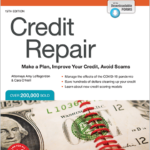Catalogues, also known as credit catalogues or online catalogues, offer a unique opportunity to enhance credit ratings. Whether you’re struggling with a low credit score or looking to build credit for yourself, catalogues provide a pathway.
These catalogues allow consumers to purchase goods on credit, without needing to first obtain a loan or line of credit from a bank or lender. This type of financing, available in the United Kingdom and other parts of Europe, can help individuals with bad credit ratings access merchandise they would otherwise be unable to afford.
But how exactly do catalogues help in credit improvement? And what are the dos and don’ts of using a bad credit catalogue? Let’s explore further.
The Importance of Responsible Credit Management
Responsible credit management is key to utilizing catalogues effectively. By using a bad credit catalogue responsibly and making timely payments, you can demonstrate your ability to use credit wisely and improve your credit score over time.
However, it’s essential to understand both the benefits and risks associated with bad credit catalogue shopping. Reading the terms and conditions carefully, understanding fees and interest rates, and committing funds towards purchases via these catalogues responsibly are vital steps.
In the next section, we’ll delve into what determines your credit score and how catalogues can be a tool to boost it.
What Determines Your Credit Score?
Borrowing History and Credit Reference Agencies
Your credit score is a reflection of your borrowing history. Every borrower, no matter how much or how little credit they have, is given a credit score. This number tells potential lenders if a borrower is a low or a high risk.
Credit reference agencies report your borrowing history, including all credit cards, personal loans, and financing. Timely repayments improve your score, while late payments, large debt balances, and unused accounts may reduce it.
Factors Affecting Credit Score: Late Payments, Large Debt Balances, Unused Accounts
Several factors can affect your credit score, including:
- Late Payments: Each late or missed repayment acts as a strike against your credit score.
- Large Debt Balances: Regularly carrying a large balance may harm your credit.
- Unused Accounts: Having unused accounts can also negatively impact your score.
Understanding these factors is the first step towards using catalogues to help build or boost your credit.
How Catalogues Can Help Improve Credit
Pay Monthly, Pay Weekly, No Credit Check Catalogues
Credit catalogues offer various repayment options, including pay monthly, pay weekly, no credit check catalogues, and credit lines for bad credit. Each line of credit comes with its own specific rules for repayment, interest rates, fees, and penalties.
Credit Lines for Bad Credit: Options and Benefits
For those with a low credit score, credit catalogues can be a beacon of hope. By offering credit lines tailored for bad credit, catalogues enable consumers to shop and make purchases, paying for them over a set time frame.
Regular Line of Credit: How It Works
Opening a credit line with a catalogue is the first step towards improving your credit score. Regularly using your credit can boost your score in the long run, showing responsibility and reducing risk.
The Dos and Don’ts of Using a Bad Credit Catalogue
Stepping Stone to Improve Credit Score
Utilizing a bad credit catalogue can be a stepping stone to improve your credit score. By making timely payments and using credit responsibly, you can demonstrate your ability to manage debt effectively. However, it’s essential to approach this method with caution and awareness.
Potential Pitfalls and Drawbacks
While bad credit catalogues offer convenience and flexibility, there are some cautions to bear in mind:
- Higher Interest Rates: Depending on the catalogue, interest rates can be as high as 60% per annum.
- Late Payments: Late or missed repayments can further damage your credit score.
- Understanding Terms and Conditions: Always read and understand the terms, fees, and interest rates before committing to any purchases via these catalogues.
Understanding Terms, Conditions, Fees, and Interest Rates
Each catalogue sets its own terms and conditions, including interest rates and fees. Understanding these details is crucial to using a bad credit catalogue responsibly. Look for clear information about pricing, returns policies, delivery times, and order cancellation rights. By following these rules, you can ensure that your transactions are secure and fully compliant with consumer protection laws.
Buy Now Pay Later Catalogues for Bad Credit
What is a Buy Now Pay Later Catalogue?
A Buy Now Pay Later (BNPL) catalogue, a popular option even for those with a poor credit score, allows you to order items and pay for them later. This could include electronics, clothing, furniture, and more. Some BNPL catalogues even offer no credit check instant approval programs.
How Does Buy Now Pay Later Work?
Choosing a BNPL payment plan gives you the ability to buy what you need now and pay for it later based on specific terms. This type of installment loan often divides the total cost into equal monthly payments. Some plans may charge interest and fees, while others may not. Always read the buy now pay later terms carefully.
Applying for a Buy Now Pay Later Payment Plan with Bad Credit
Applying for a BNPL plan with bad credit is simple. Add your items to the online basket, start the checkout process, and fill out an online credit application. Some online stores may perform a “soft” credit check, which doesn’t impact your credit score. Approval may be almost immediate or within 24 hours.
Drawbacks and Risks of Catalogues
Higher Interest Rates and Their Impact
The interest rates for catalogues that accept bad credit can vary widely. Higher interest rates are often used by credit catalogues with long-term payment options, sometimes lasting over 24 months. Understanding these rates and their impact on your overall cost is essential.
Consequences of Late Payments and Large Balances
Late payments and large balances can have serious consequences:
- Late Payments: These can act as a strike against your credit score.
- Large Balances: Regularly carrying a large balance may harm your credit.
How to Avoid Common Mistakes
Avoiding common mistakes when using catalogues is key to boosting your credit score. Here are some tips:
- Make Timely Payments: Never miss a payment.
- Understand Interest Rates: Know the terms of the credit line.
- Spend Responsively: Enjoy shopping from catalogues but take your spending seriously.
Conclusion
Summary of How Catalogues Can Boost Credit Score
Utilizing catalogues to improve bad credit is a viable strategy for many individuals. Through responsible use, understanding terms, and making timely repayments, catalogues can be a tool to rebuild credit. Whether it’s regular credit catalogues or Buy Now Pay Later options, the key lies in responsible management and awareness of potential pitfalls.
Spending Safely with Catalogues
Spending safely with catalogues requires diligence and understanding. From interest rates to repayment options, knowing the ins and outs of the catalogue you choose is essential. Enjoy the convenience and flexibility of catalogues, but always take your spending seriously.
Final Thoughts and Recommendations
Improving bad credit through catalogues is a journey that requires time and effort. It’s not an overnight solution but a gradual process that can lead to significant improvements. Always read the fine print, make repayments on time, and choose catalogues that align with your financial position and needs.





